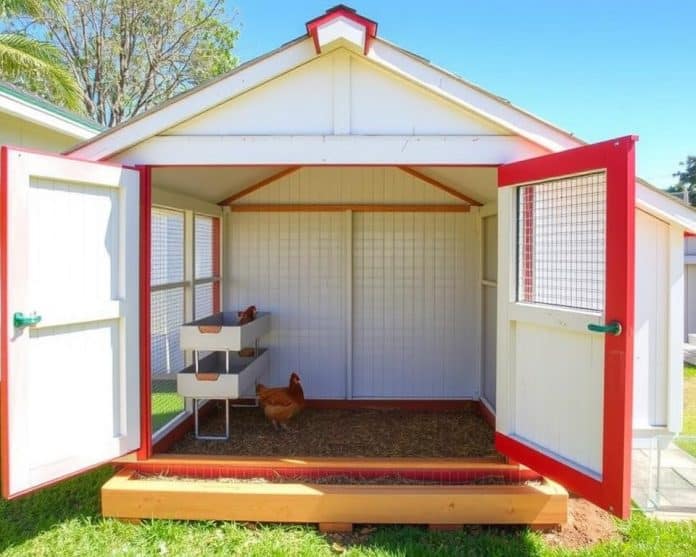Choosing the best chicken coop features is vital for your flock’s well-being and safety. Every coop needs certain elements to ensure your chickens are healthy and happy. These essentials make a coop high-quality and necessary for caring for chickens in your backyard.
Space is key to avoid overcrowding, which is bad for chicken health and behavior. Each large fowl needs 2-4 square feet inside the coop and over 10 square feet in the run. For smaller bantam chickens, you need half that space. Also, getting a bigger coop can help if you plan to add more chickens later.
It’s essential to protect your chickens from predators. A strong hardware cloth with ½” mesh keeps predators out. Self-latching gate locks add extra security against smart animals like raccoons.
Good ventilation keeps the air clean and safe by letting ammonia out. Vents should be placed high to avoid cold drafts on the chickens. Adding quality insulation keeps chickens comfortable in winter. Poly-iso insulation works well for this.
Last, covered runs make your coop better. Clear corrugated roofing protects chickens from rain and snow. It also stops wild birds from bringing droppings into the run.
Key Takeaways
- Adequate space: Provide 2-4 square feet per large fowl and 10+ square feet per bird in the run.
- Effective predator proofing: Use hardware cloth with ½” mesh size and self-latching gate locks.
- Proper ventilation: Place vents high to control ammonia levels and prevent draft where birds sleep.
- Insulation: Combine with ventilation and use poly-iso insulation during winter.
- Covered runs: Use clear corrugated roofing panels to protect from rain, snow, and wild bird droppings.
Adequate Space for Your Chickens
It’s very important to ensure your chickens have enough space. A chicken coop like the ones you can find at ferrantinet.es can guarantee that. The right planning and design can greatly affect their happiness and output. Thinking about their needs now and in the future is key.
Recommended Space Requirements
There are clear guidelines to follow when setting up your chicken coop. The coop size per chicken has a big impact on their comfort and how well they do:
- Standard Breed Chickens: 4 square feet inside the coop, 8 square feet in the run area
- Standard Heavy Breed Chickens: 8 square feet inside the coop, 15 square feet in the run area
- Bantams: 2 square feet inside the coop, 5 square feet in the run area
Planning for Future Growth
Thinking ahead about adding more chickens is smart. Choosing expandable chicken coops helps make this easier. This means less stress for you and the chickens. Here’s what you might need based on how many chickens you have:
| Number of Chickens | Coop Size | Run Size |
|---|---|---|
| 6 chickens | 24 sq. ft. | 48 sq. ft. |
| 10 chickens | 40 sq. ft. | 80 sq. ft. |
| 20 chickens | 80 sq. ft. | 160 sq. ft. |
Human Accessibility
Thinking about how people can get into the coop is also important. A well-designed coop makes taking care of your animals easier. It makes sure your chickens stay healthy. Things to keep in mind include:
- The coop should have doors wide enough for easy access.
- Install windows or vents to ensure proper ventilation without compromising space.
- Ensure pathways within the coop are clear and unobstructed.
Adding these features to your coop design makes life better for your chickens. And it makes your daily tasks easier and more fun.
Effective Predator Proofing
Keeping your birds safe is a must when you make a chicken coop. A single predator can take out many birds in one night. So, making the coop safe from predators is very important.
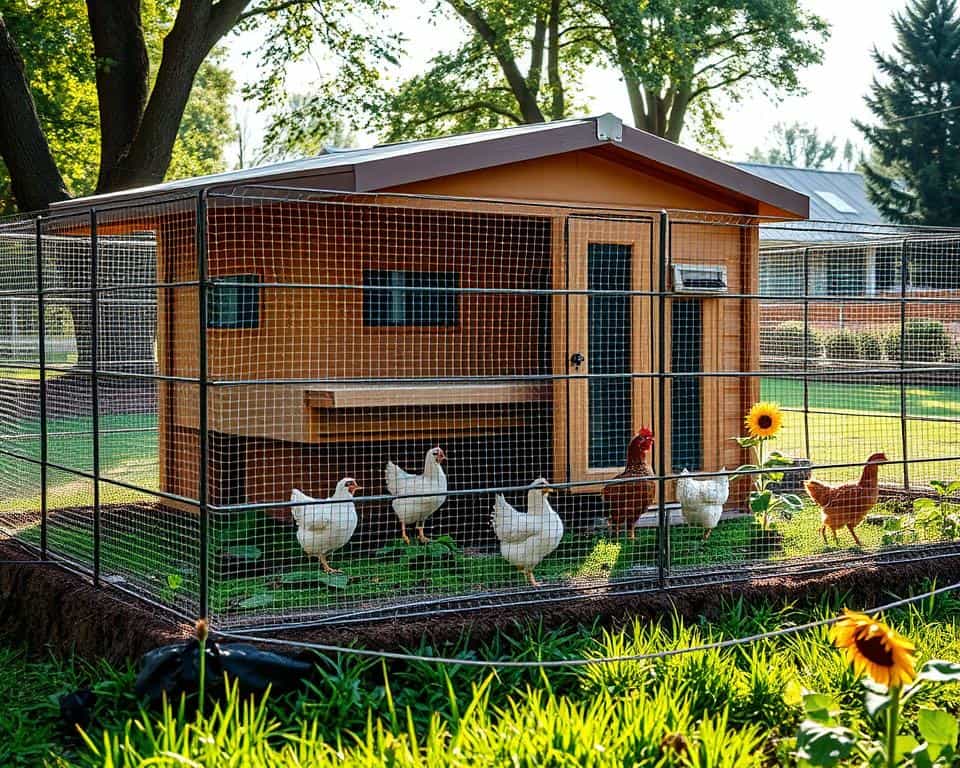
Importance of Hardware Cloth
Hardware cloth is better than chicken wire for making a safe coop. Small predators can’t get through its tiny holes. Though it costs more than chicken wire, it protects much better.
- Hardware Cloth: It’s best to cover any openings in the coop. This stops snakes and weasels from getting in.
- Burying Hardware Cloth: Dig a trench 12 inches deep around the coop. This stops animals that dig.
- Covering the Run: Put a roof or hardware cloth over the run. This keeps out animals that climb or fly. Netting can help, but it’s not as good.
Proper Latching Mechanisms
It’s key to use latches that raccoons can’t open. Using a latch system with two steps makes the coop safer. Thinking about automatic doors can also be smart. Look at these latch types:
| Latching Mechanism | Effectiveness | Ease of Use | Cost |
|---|---|---|---|
| Simple Lock | Low | Easy | Low |
| Two-step Lock | High | Moderate | Moderate |
| Automated Door | High | Very Easy | High |
Skirting for Extra Protection
Adding skirting to your coop’s base gives more security. Burying hardware cloth stops digging animals like foxes. Closing all gaps and keeping the coop clean also helps. Always check the coop to keep it safe.
Proper Ventilation
Good air flow in chicken coops is key for keeping chickens healthy. A well-designed coop airflow helps control the temperature, cuts down humidity, and stops respiratory problems in your birds. Let’s dive into how to set up and keep up good ventilation in chicken coops.
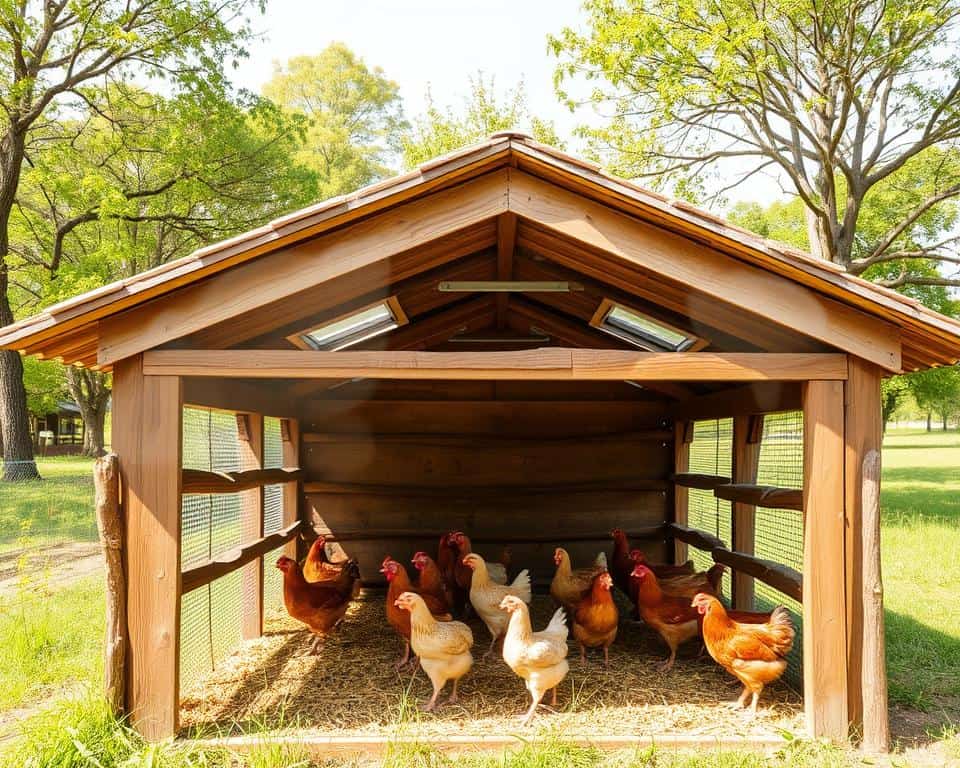
Importance of Airflow
Chickens need good airflow to stay healthy. It keeps the air clean inside the coop. Good ventilation gets rid of bad gases like ammonia from chicken poop. Experts say chicken coops need 3-4 square feet of airflow in cold weather. This can be done with pop doors, vents, and windows.
This setup helps control odor and prevents respiratory problems and frostbite when it’s cold. Also, coops with natural bedding need more airflow. This is because natural materials let out more moisture and gases. So, more airflow is needed to keep the coop healthy and safe for chickens.
In hot weather, ventilation becomes even more important. High temperatures can stress chickens. Adding windows, using fans, and making pop hole doors can help a lot. Regular cleaning and using dropping boards can cut down the need for more ventilation. This helps by removing extra moisture and gases.
Vent Placement
Where vents are placed is very important for good ventilation in chicken coops. Putting vents in smart spots helps keep air moving well. Vents work best when put high up. This lets warm, wet air go out and cool, fresh air come in from below.
To improve airflow, make gaps between the roof and walls, add floating roofs, and use windows. In sunny or very humid places, more windows and open walls help. They stop overheating and keep humidity balanced. Always check the temperature at night in the summer. High night temperatures may mean you need more ventilation.
Good vent placement and coop design make sure airflow is great. This helps control temperature, manage humidity, and keep your chickens healthy.
Good Insulation
A well-insulated chicken coop keeps a constant temperature all year. This makes sure your chickens stay comfortable and healthy. The right materials and how you install them matter a lot.
Insulation is key in all weather. It cuts down the need for extra heating or cooling. So, choosing well is very important.
Combining Insulation with Ventilation
Proper airflow is a must when insulating chicken coops. Without it, moisture and harmful gases can build up. A balance between insulation and ventilation keeps the air healthy.
Using foam board and placing vents smartly helps. This avoids drafts while allowing fresh air to move freely.
Material Recommendations
Choosing insulation depends on your climate and how much you can spend. For cold areas, R-13 to R-21 insulation is best. Materials like fiberglass and foam boards are good choices.
In warmer places, R-5 to R-7 materials, like reflective insulation, work well to keep heat out. For various coop types, different materials fit best. And your budget helps decide between cheaper options and pricier ones.
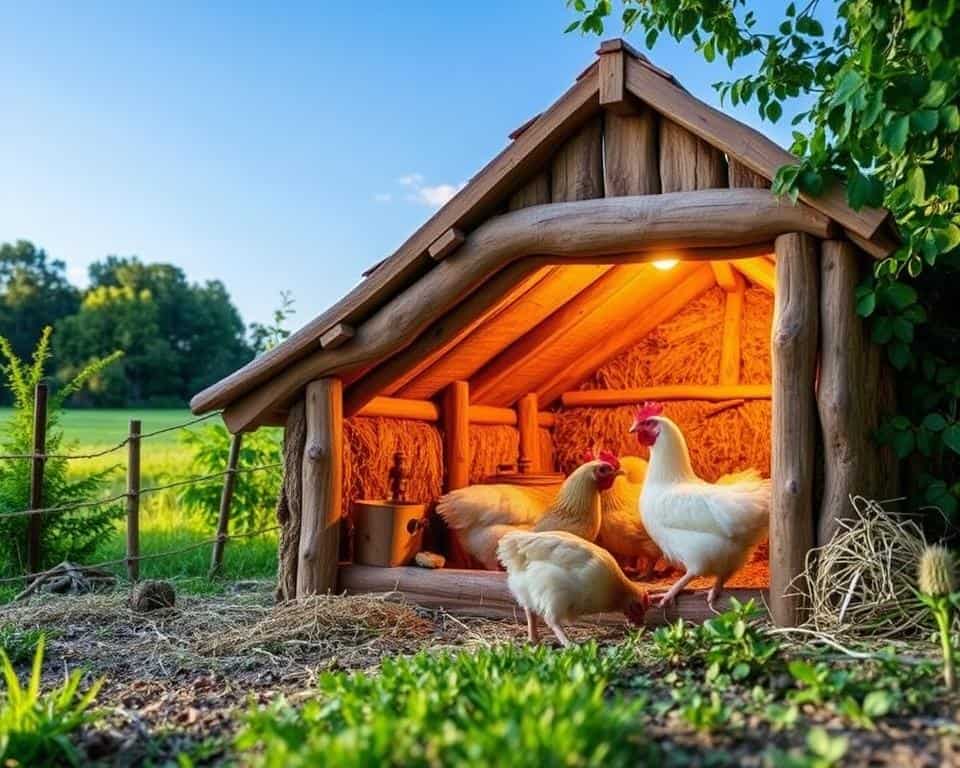
Installing insulation right is key to its efficiency. It needs to fit tightly. Use baffles, hangers, and seal seams well.
Safety matters too. Choose non-toxic insulation to keep your chickens safe and comfortable. Materials should protect them from cold and heat without harmful chemicals.
Covered Runs
Using chicken run roofing is very important for your poultry. Covered runs keep your chickens safe from bad weather. They also keep the chicken area clean and safe.
Material Choices for Roofs
Choosing the right materials for your chicken run roof is key. Corrugated plastic and metal sheets are great choices. They are strong and keep out rain, snow, and sun. These materials ensure a long-lasting, safe home for your chickens.
Benefits of Covered Runs
Covered runs protect chickens from predators and bad weather. They stop wild birds from getting in, lowering disease risk. Many poultry keepers say covered runs help a lot, especially in keeping eggs clean.
Poultry experts suggest making larger runs than you first think to need. For example, a 20′ x 16′ run fits up to 50 chickens. This gives your chickens more space to move and live happily.
| Feature | Benefit |
|---|---|
| Weather Protection | Prevents extreme weather exposure |
| Predator Safety | Reduces risk of predators |
| Health Safety | Protects against disease from wild birds |
| Durable Materials | Long-lasting and weather-proof |
| Increased Comfort | Ensures ample space for movement |
Include Roosting Perches
Your chicken coop needs the right roosting perches for your flock’s health and happiness. It’s important to plan the perch set-up well, so chickens feel comfortable. We’ll look at the best design, materials, and where to put perches.
Choosing the Right Materials
Wood is the best for roosting perches. It’s traditional and works well. You can paint wood with safe paints like milk or chalk paint. The best perch size is between 5-10 cm to fit chickens’ feet. Avoid slippery metal roosts, and maybe try Omlet’s plastic ones for easy cleaning.
Placement of Roosts
Putting roosts in the right spot in the coop matters a lot. They should be above nesting boxes to keep things clean. Give each hen 8 inches of space on the bar. It’s good to have roosts at different heights but above two feet for movement.
Roosts should be between your knee and hip high to protect chickens’ joints. Also, keep space between perches to avoid overcrowding.
Accessibility for Chickens
Chickens need to easily get to their roosts. High perches make them feel safe and strengthen their wings. An automatic door helps all chickens get in at night. Keep feeders and water far from roosts to stay clean. Each hen should have about 20 cm of space on the perch for comfort.
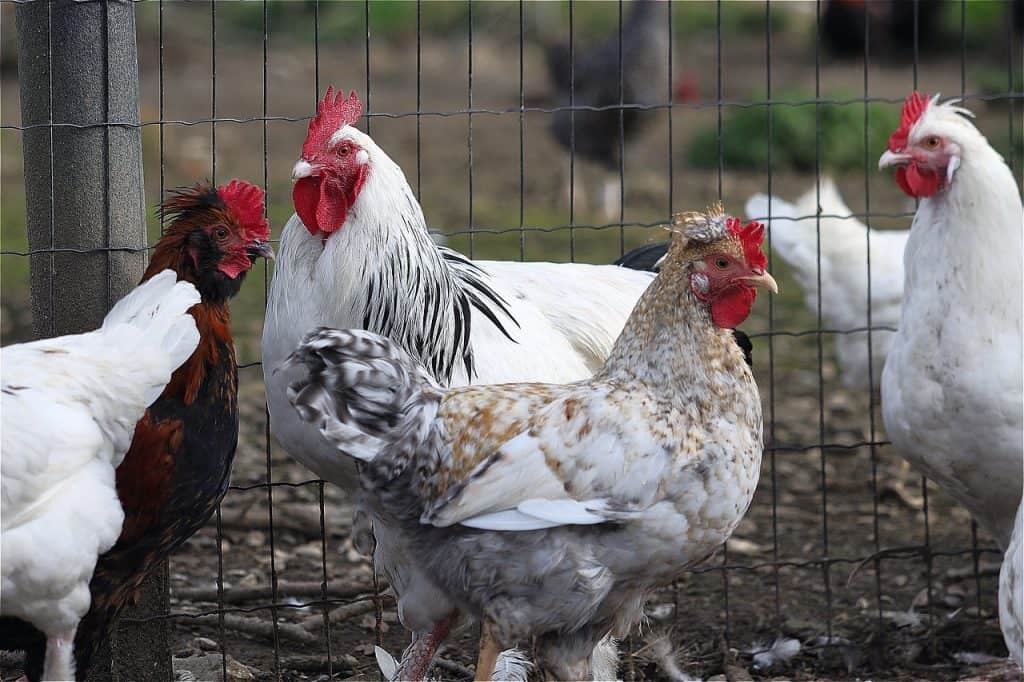
Nesting Boxes
It’s essential to have the right nesting boxes for a healthy coop. These boxes give hens a clean, safe spot to lay eggs. Thinking about design, where you put them, and keeping them clean is vital.
Design and Placement
Usually, you need one box for every 2 to 3 hens. But ensure you have one per 4 hens at least. This prevents too many hens per box. More boxes mean happier, less crowded hens. Place them 18 inches off the ground. This helps in keeping eggs clean.
This height encourages hens to lay eggs there, not elsewhere.
Materials for Nesting Boxes
Hens like hay or straw better than wood shavings. It keeps them comfy and nest clean. Change these materials often for cleanliness. Size matters based on your chicken breed; larger chickens need bigger boxes.
People also use old items like buckets or dresser drawers as nest boxes.
Maintaining Clear Nesting Areas
Keeping nesting spots clear is key for egg laying. Place nest boxes where there’s not much going on. This makes hens feel safe. Clean these spots once a month to stop bacteria. Also, adding herbs can ward off pests and boost egg laying.
Try putting a fake egg or a golf ball in the nest. It shows hens it’s a good place for laying eggs.
Maintaining Air Quality
Keeping coop air quality top-notch is key for chicken health and productivity. Clean regularly and ventilate well to keep the healthy chicken environment. This reduces harmful ammonia levels in coops. Chickens give off water vapor, ammonia, and heat. Good ventilation is needed to manage moisture and humidity.
Chickens release water in their feces, not urine. This process lets out ammonia fumes. If not controlled, these fumes can harm their respiratory systems. Good ventilation keeps humidity low. This helps prevent respiratory sickness and frostbite. It’s wise to have at least 1 sq ft of vent space per chicken. However, you might need more based on the climate and coop size.
Various ventilation methods help keep coop air quality high:
- Passive (natural) ventilation: Uses natural air flow. It’s less expensive but might need extra steps to stop drafts and ensure enough air exchange.
- Wind turbine ventilation: Uses wind. It’s good for windy areas.
- Active (mechanical) ventilation: Moves air with fans. Great for big coops or places with little natural air flow.
Good coop care means checking vent blockages and adjusting ventilation with the weather. Use absorbent bedding and clean regularly. Also, keep an eye on mechanical systems to keep them working right.
Ventilation planning is key, especially to stop overheating in summer. Keep coops under 75 degrees Fahrenheit to avoid heat stress. Avoid drafts in cold weather. Make sure vent openings are above chicken level to stop cold air from hitting the chickens directly.
Here’s a look at the pros and cons of each ventilation option:
| Ventilation Type | Advantages | Drawbacks |
|---|---|---|
| Passive (natural) | Cost-effective, uses natural air | May need extra steps to stop drafts |
| Wind turbine | Uses wind power | Relies on having wind |
| Active (mechanical) | Gives steady air flow | Needs electricity and regular upkeeping |
To get and keep great coop air quality, smart ventilation management is a must. Use natural and mechanical ways as needed. By doing this, you ensure your chickens stay healthy and happy.
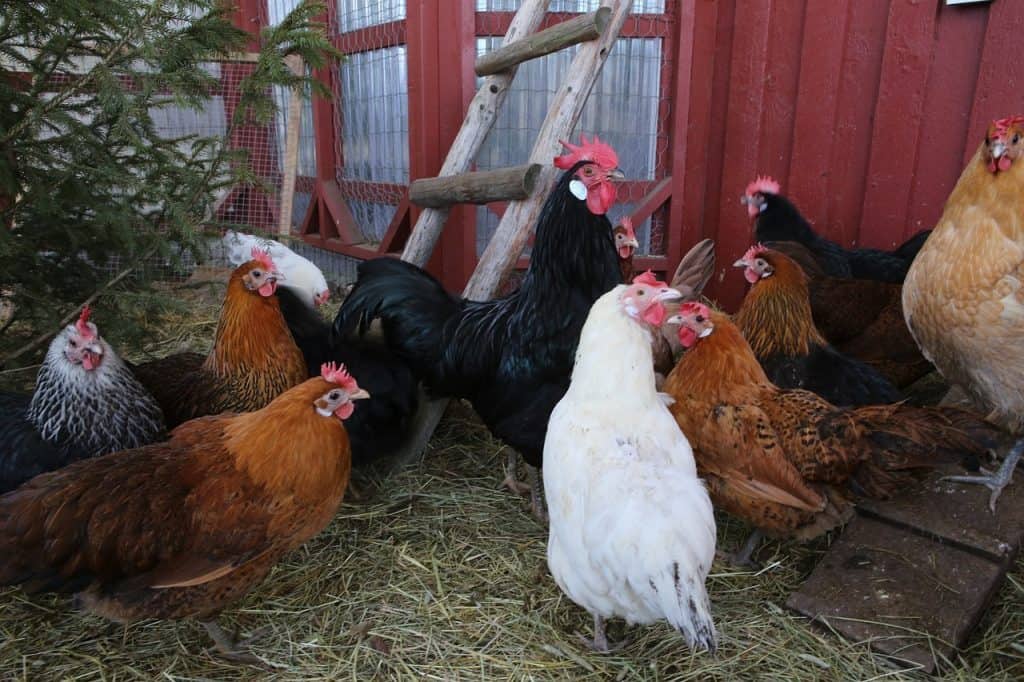
Installing Litter Trays
Installing litter trays under roosting areas makes coop upkeep easier. It not only aids in cleaning. It also boosts your flock’s health. Adding litter trays to your coop design improves cleanliness and efficiency for your chickens.
Benefits of Litter Trays
The litter tray benefits are plenty. They make daily cleaning simpler by gathering waste in one spot. This makes the chicken coop easier to clean. Litter trays reduce dampness and smells, making a healthier chicken home. They quickly remove waste, stopping harmful bacteria and pests from growing.
How to Clean Litter Trays
Cleaning litter trays regularly is key for easy coop maintenance. Start by taking the trays out each morning. The cleaning method depends on the bedding used. Dustless sand works well because it’s easy to clean and keeps the coop dust-free. Or, use fine hemp bedding for its absorbency and low dust.
- Take out the dirty bedding and throw it away right.
- Clean the trays with a disinfectant to kill germs.
- Put in new bedding, like dustless sand or hemp, and place the trays back.
This routine keeps your chickens healthy and clean.
Chicken Coop Size
Proper coop sizing is very important. It keeps your chickens healthy and productive. Each chicken needs a certain amount of space. This depends on their breed and if they go outside. For large breeds that roam free, they need 4 square feet each. If they can’t roam, they need up to 10 square feet per bird. Medium breeds require 3 square feet in a free-range or 8 square feet if confined.
Small chicken breeds are different. They need 2 square feet in a free-range. In small spaces, they need 5 square feet each. Planning your coop’s size means thinking about future growth too. A coop for three to five chickens should be 12 to 18 square feet. Six medium-sized chickens need about 18 square feet. And eight chickens require at least 24 square feet. For 20 chickens, plan for 96 to 120 square feet of space.
Outdoor areas add room but don’t count as main space. Learning from others can help a lot. For example, a hobby farmer has 28 Leghorns in a 7×12 Quaker coop (Q712). A health fan keeps eight Rhode Islands in a 4×8 coop (Q48). Coops must have roosting bars. You need 10–12 inches of bar per large chicken. They also need one nesting box for every three hens. This stops too many hens wanting to lay eggs at once. The right coop size improves your chickens’ health, egg laying, and happiness.


